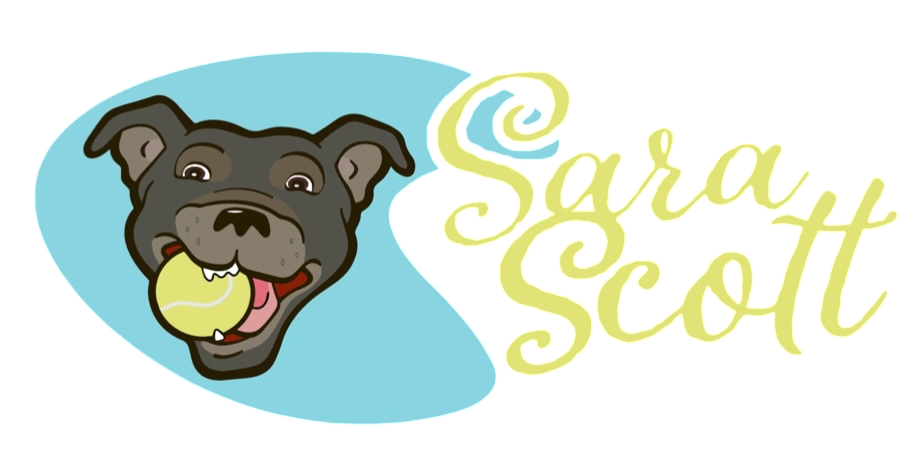A Science-Based Guide to Counterconditioning: How to Effectively Use Learning Theory With Your Dog.
- Sara Scott

- Nov 20, 2023
- 4 min read
Updated: Dec 6, 2023
Struggling with your dog's problematic behaviors like aggression, fearfulness or anxiety? Many owners deal with unwanted canine behaviors that seem impossible to overcome. Yet the most effective training approach is frequently counterconditioning – a technique backed by behavioral psychology science.
Let's explore what counterconditioning is, how it reshapes a dog's emotional responses, and practical strategies for implementing it yourself.

Understanding the Origins
Counterconditioning emerged from the seminal work of renowned behaviorist B.F. Skinner in the early 20th century. His experiments with classical conditioning demonstrated how learned associations can powerfully shape behavior.
These principles were then applied to modifying emotional reactions and overcoming fears in both humans and animals. By changing associations, counterconditioning transforms involuntary responses to triggers.
How Counterconditioning Works
Counterconditioning utilizes learning theory to alter a dog's automatic emotional response from icky to happy through consistent pleasant associations thoughtfully created with the trigger. Their perception shifts from "trigger = icky/frustrating/arousing" to "trigger = happy/calm/relaxed.".
For example, a dog reactive to other canines due to fear can come to feel happy anticipation rather than anxiety when spotting another dog after repeated conditioned experiences.
The Process Behind the Change
Several key mechanisms enable this emotional shift to occur:
- Repeated Conditioning - Conditioning the trigger to predict rewards over and over develops new neural pathways linking the trigger to positive feelings rather than fear or aggression.
- Remaining Under Threshold - Keeping exposure low enough to prevent negative reactions prevents rehearsal of unwanted behaviors. This allows new positive associations to develop.
- Emotional State Matters - The dog must experience the trigger when already feeling safe for conditioning to be effective. A nervous or aroused dog will struggle to absorb new learning.
- Generalization - Counterconditioning in many environments discourages context-specific behavior. The dog learns the trigger predicts wonderful things everywhere.
Proper Sequence Matters
It's crucial to understand counterconditioning is not just about pairing triggers with rewards. The specific sequence and timing of the stimulus presentation impacts the training effectiveness.
First, the dog must perceive the trigger consistently coming before the reward. This conditions the dog to recognize the trigger as a new signal that a pleasant consequence will follow.
If the reward comes before the trigger appears, no beneficial conditioning takes place. You risk conditioning the food reward to predict icky things appearing on the horizon instead.
Timing Matters Too
Additionally, the reward must closely follow the trigger for them to become linked in the dog's mind. Too wide of a gap between the trigger and reward prevents the dog from making the association we are after.
Consistently ensuring the trigger precedes the reward by just 1-3 seconds enables proper cognitive connections to form. The trigger becomes a conditioned cue predicting good things are imminent.
Training Sub-Threshold
One of the most critical elements of effective counterconditioning is keeping exposures to the trigger under the dog's fear or aggression threshold. This means carefully managing distance, duration, intensity, and frequency of exposures to prevent reactive responses. We’ll dive into the topic of working your dog sub-threshold in more detail in a future blog post.
Why Counterconditioning Works
Several key attributes make counterconditioning highly effective:
- It aligns with how dogs naturally learn - through associations. Their brains readily absorb the new conditioned emotional response.
- It prevents rehearsing unwanted behaviors through keeping exposures sub-threshold. This allows new learning to take hold.
- It's grounded in decades of behavioral research on therapeutic conditioning techniques. The science is sound.
- Results improve through hundreds of repetitions. The more exposures, the stronger the new neutral or positive association becomes.
For these reasons, counterconditioning succeeds where attempts to simply punish undesirable behaviors are unethical and often fail. It creates lasting change by reshaping emotions rather than just suppressing symptoms. When applied diligently, it retrains your dog's mind.
While the theory of counterconditioning is straightforward, executing it effectively in real-world situations can prove challenging. Reading about the techniques is simple - but precisely managing triggers and timing rewards in the moment takes skill. Consider hiring a certified professional dog trainer experienced in behavior modification to assist. A trainer can pinpoint if issues like poor timing, lack of safety, or exposures over threshold are sabotaging your progress. Investing in customized guidance sets you up for training success and lasting improvements in your dog's behavior.
Stick with the plan through ups and downs. Troubleshoot bumps compassionately. You'll see that counterconditioning has remarkable power to permanently transform your dog's state of mind and problem behaviors when applied diligently.
Has your dog's chronic behavior issues like reactivity, fear, or aggression got you feeling stuck and overwhelmed? Counterconditioning is proven to help, but it can be challenging to implement correctly on your own.
If you need personalized guidance designing an effective counterconditioning training plan tailored to your unique dog and situation, I can help. My customized training programs combine the science of learning theory with practical real-world behavior modification protocols.
Email me to discuss your dog's specific behavior struggles. I'll help you gain a better understanding of your dog's triggers, work to change their emotional responses, and teach you how to properly execute counterconditioning techniques. Let's meet your dog where they are and take steps to improve their quality of life. Relief is possible – email me today!




Comments